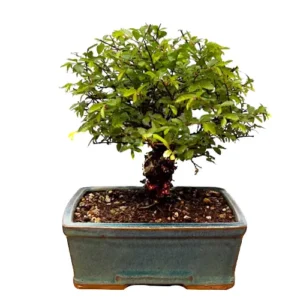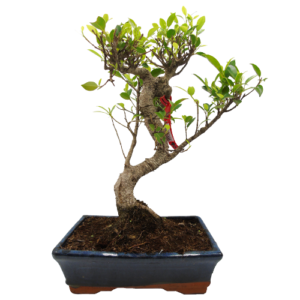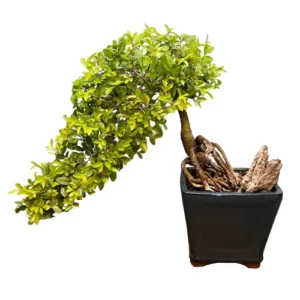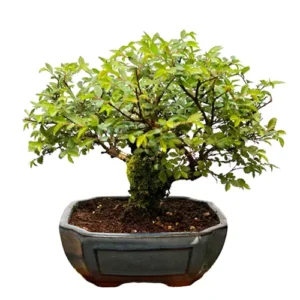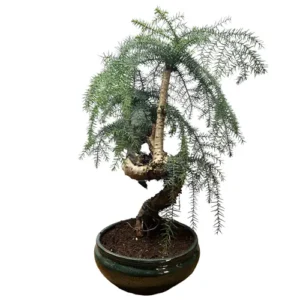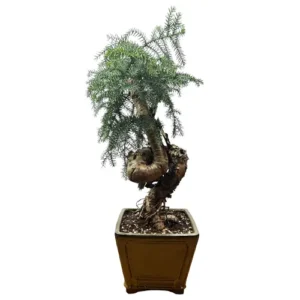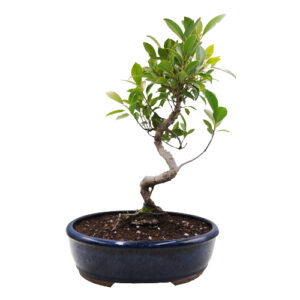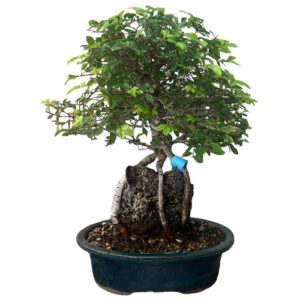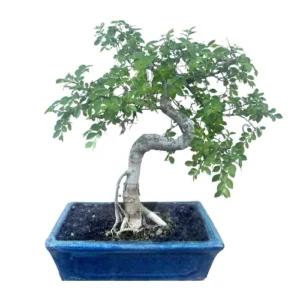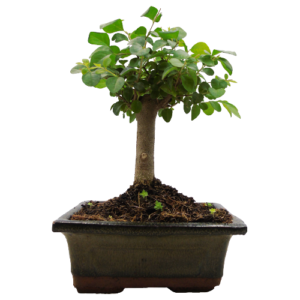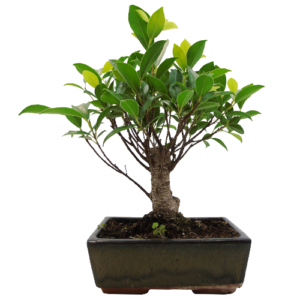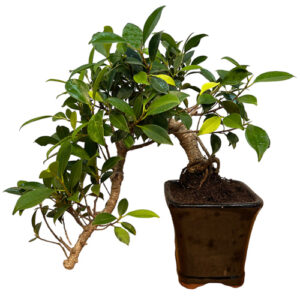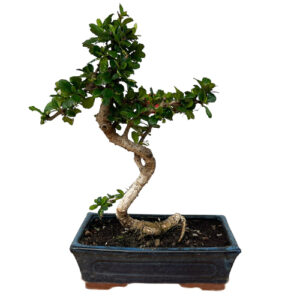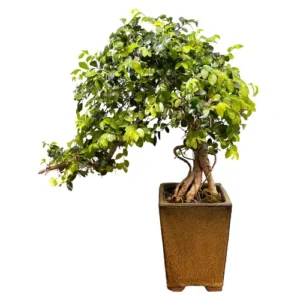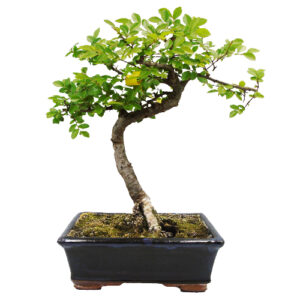Punica granatum
Pomegranate Bonsai
Native to southeast Europe and the Himalayas, punica granatum is highly valued in Japan for the ability to train its free-forming gnarled trunk. These Mediterranean broadleaf deciduous are grown as much for their famous fruit, as their narrow lustrous leaves blossoming from a reddish bonze to a bright green.
Pomegranate Bonsai Care Tips
Placement
Generally, pomegranate bonsai respond well to full sun across the year. This specimen only flowers in full sun and will only bear fruit in autumn in temperatures between 13 -16 degrees C. If a sunny spot in summer isn’t possible indoors, consider moving this bonsai outdoors to achieve this.
Watering
Make sure the compost never dries out. Water your Pomegranate regularly during the summer. In the winter be sure that the soil is kept moist. It’s advised that the plant is misted during the warmer summer months. This can be achieved by using a mister to spray the leaves, as well as placing a gravel tray under the pot to create a more humid microclimate around the tree and reduce evaporation from the leaves.
Feeding & Fertilising
Once a month, using a general fertiliser, feed your pomegranate bonsai from early spring to summer. In later summer use a feed with lower nitrogen content.
Pruning & Wiring
After flowering, prune out new shoots that have grown too long. Growing tips should be pinched out to maintain the plant’s shape and to stimulate growth. Do not prune or pinch during the summer.
Wiring branches should take place from spring’s finish to the summer. The wires should be left in place for a full year. We recommend using wires with a thickness that matches the thickness of the branch: if the wire you choose is too thick you will damage the bark. If it is too thin, it won’t be effective.
Repotting
Repotting your tree is an important way to provide a fresh and suitable soil mix and ensure appropriate root health. Pomegranate bonsai require repotting during the start of spring every 3-4 years. Free-draining soil mix is advised.
Trees that are ready for repotting will require root pruning, a suitable new pot and appropriate soil mix.
When repotting, do not cut back the root mass by a large amount, and choose a well-draining soil mix that has a neutral or slightly higher PH value of 5-6 but not over 7. We tend to use a mixture of different speciality bonsai soils on our trees. Every species is different so please contact us for free soil-mix advice or to take advantage of our repotting service.
Bonsai make for a one-of-a-kind indoor plant offering elegance, nature and art all in one minute form. Across an array of exquisite and erudite species, they all demand their own specific care and cultivation needs in order for their beauty to flourish. We have an extensive library of care guides for indoor bonsai trees so you can make an informed and considered choice. It’s not about selecting the perfect bonsai, it’s about selecting the perfect bonsai for you.
Pomegranate Bonsai - Typical Queries
How to propagate Pomegranate bonsai?
Pomegranate bonsai can be propagated with seeds, cuttings and air-layering. Seeds need sowing in the Spring between 13-18 degrees C. Hardwood cuttings need taking before the buds open in Spring. Semi-hardwood cuttings can be taken in the summer. When the Spring growth has hardened air layering can take place. Root cuttings can also be used.
Do Pomegranate bonsai get pests and diseases?
A Pomegranate bonsai that is well cared for shouldn’t incur any pests or diseases. Otherwise, a poor placement or care regime may attract whiteflies, scale, mealy bugs and aphids. This can be handled by altering your plant position and care and using pesticides. Overwatering the tree can bring root rot.
Can you keep a Pomegranate bonsai outdoors?
Pomegranate bonsai can be grown outdoors. However, if you’re growing in a temperate climate like the UK, winter and frost protection like a frost-free frame is necessary.

